Samsung QN95A (65QN95A) review: an astounding 4K TV with Mini-LED QLED
The Samsung QN95A was one of the first Neo QLED 4K TVs, and it produces incredible results

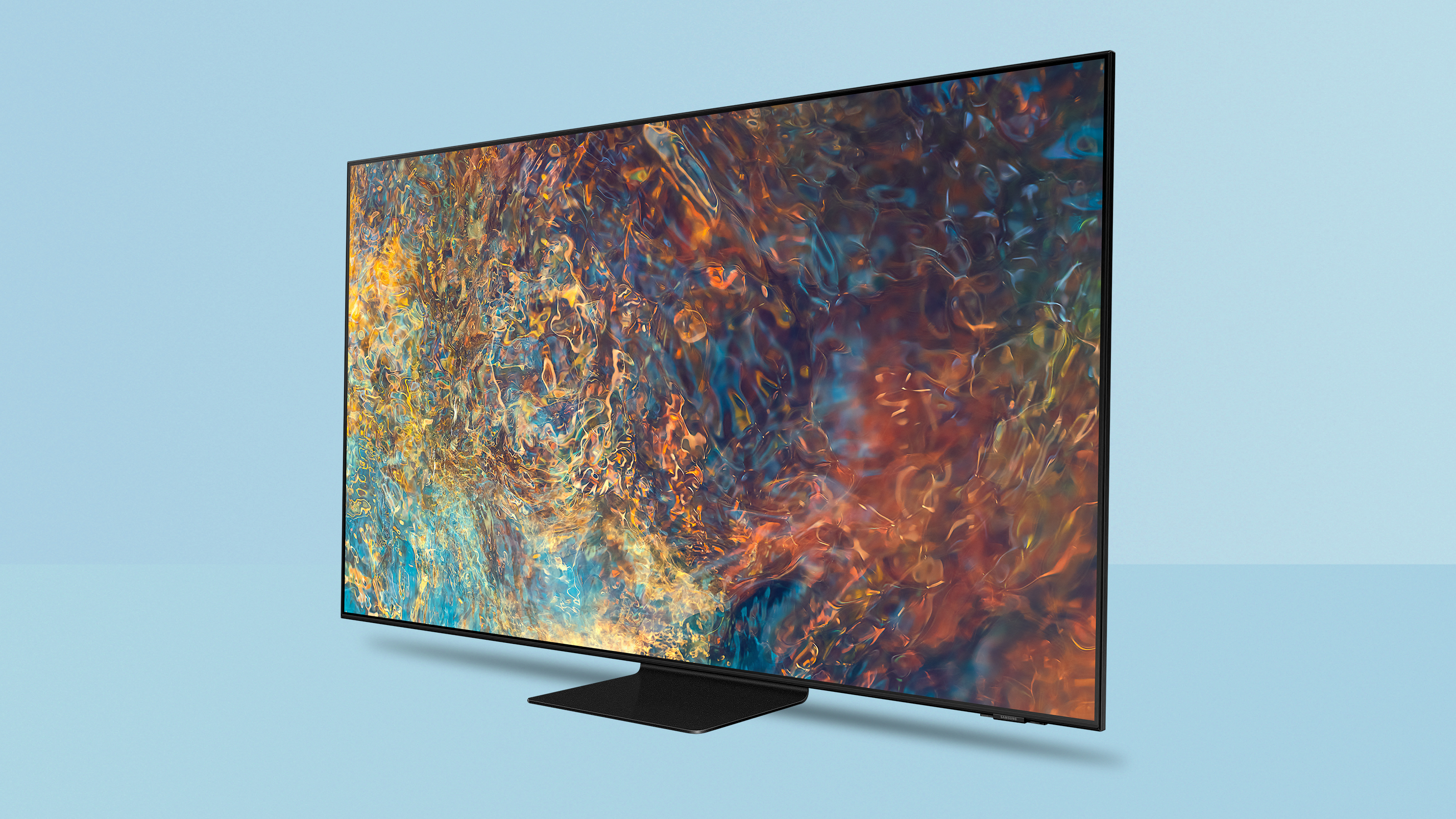
The Samsung QN95A is, quite simply, the state of the 4K TV art as it stands at the beginning of 2021. It's a showpiece for Samsung's image quality, and the Mini-LED 'Neo QLED' tech powering it.
-
+
Outstanding across-the-board picture quality
-
+
Exemplary operating system
-
+
One Connect box keeps the look uncluttered
-
-
Not what you’d call affordable
-
-
No Dolby Vision HDR
-
-
No Dolby Atmos/DTS:X decoding
Why you can trust T3

Any Samsung QN95A review has to start by saying that this range was a part of Samsung’s flagship 4K TV range of 2021, and while that's now slightly out of date, you should still consider them because they're easily some of the best TVs of recent years.
Featuring ‘Neo QLED’ screen tech, which is Mini-LED in lamens terms, you can expect impressive blacks, contrasts and backlighting control here - long story short, the viewing experience is phenomenal.
This isn't the only Mini-LED TV about town though (we're expecting the technology to make a huge splash in our list of the best TVs over the coming years) but Samsung was first out of the gates to get it in our hands, and it sets one hell of a benchmark, and only makes us more excited about Mini-LED in a more general sense.
I wouldn't count out the best OLED TVs if I were you though, they're getting cheaper all the time and they're still the most sought after even now. But if you're after fresh tech that has the potential to give OLED a run for its money then the Samsung QN95A range is a good place to start the search.
We're testing the 65-inch model of the QN95A for this review, to find out more about that, read how we test at T3.
Samsung QN95A review: Price and features
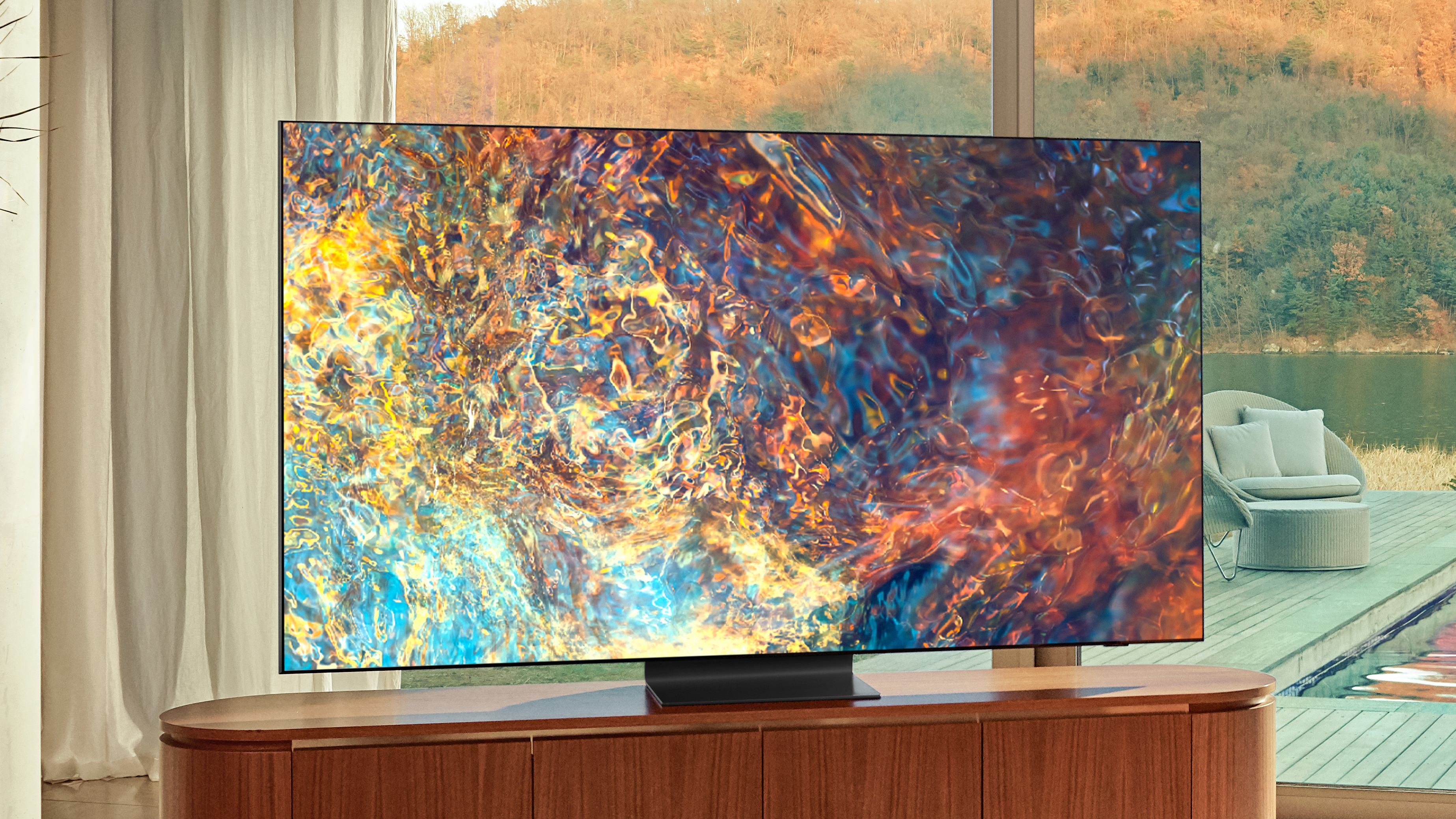
As is inevitable with a range-topping TV that’s brand new onto the market, the Samsung QN95A will cost you. This 65-inch version (the 65QN95A), in fact, will cost you £2,999/$2,600, which is a not inconsiderable sum in anybody’s language. The set is also available in a 55-inch version (55QN95A), 75-inch version (75QN95A) and 85-inch version (85QN95A). We don't have confirmed prices for these other sizes yet.
Happily, the feature-count goes quite some way to justifying the cost. The most significant feature from a technology point of view is, of course, the way the LCD pixels of the screen are illuminated and back-lit. Mini-LED replaces the hundreds of LED diodes used in traditional panels with many thousands of far, far smaller equivalents – Samsung says the LED diodes here are forty times smaller than those that backlit its (suddenly) more prosaic screens.
And as well as shrinking the diodes themselves, Samsung has dispensed with the relatively bulky lens that guides the light from each diode in the correct direction (ie forward). Instead, each of the tiny Mini LED diodes has an extremely brief micro-filter over it that takes care of that particular job.
The benefits of this are two-fold. Shrinking the size of the diodes and getting rid of the lens means the QN95A is a gratifyingly slim screen. It’s just 25mm deep, and unlike an equivalent OLED TV, which is super-slim right until you encounter the area where it packs all its electronics, it’s consistently 25mm deep. Which, when the screen itself is 65-inch on the diagonal, is depth so negligible the set is virtually two-dimensional.
Plus, of course, replacing hundreds of diodes with thousands of much smaller alternatives means more, and much smaller, dimming zones – which in turn promises better backlighting control and better black depth and detail.
Elsewhere, the QN95A is almost as impressively specified. Given that its dimensions lend themselves so readily to wall-hanging, the appearance of Samsung’s One Connect box is very welcome – it takes all but one connection away from the TV and puts everything in a slim off-board box. So all four HDMI inputs, digital optical input, Ethernet socket, USB input, multiple tuner aerial posts and even mains power are all supplied from the One Connect box to the screen via one reasonably slim cable. Want to hang your QN95A on the wall? You’ve only one cable to conceal. Nice.
This is a 4K 120Hz TV, and given that all four HDMI inputs are of 40Gbps HDMI 2.1 standard, next-gen gamers are extremely well served. Auto Low Latency Mode, HGiG tone-mapping, Variable Refresh Rate, FreeSync Premium Pro (which guarantees FreeSync performance even with HDR content)… they’re all available and they’re all designed to make even the most complex PS5 and/or Xbox Series X games look (and play) a treat. Samsung is claiming a response time of (at worst) 9.3ms and (at best) sub-6ms – all of which mean this is absolutely one of the best gaming TVs available now.
On the subject of HDR though, it’s no surprise but nevertheless disappointing to report that even in 2021 Samsung’s TVs still go without Dolby Vision HDR. Never, ever underestimate the bloodymindedness of global corporations…
As far as sound goes, Samsung has tricked out the QN95A with its Object Tracking Sound+ arrangement. Despite the company describing it as a ‘4.2.2’ set-up, it actually features six speaker drivers: a couple of tweeters at the top of the frame, one more on each side, and a pair of mid/bass drivers at the bottom of the frame. As the name suggests, OTS+ attempts to let sound mimic on-screen movement, so the sound of a car driving left to right will track along with the visuals.
Samsung QN95A review: Picture performance
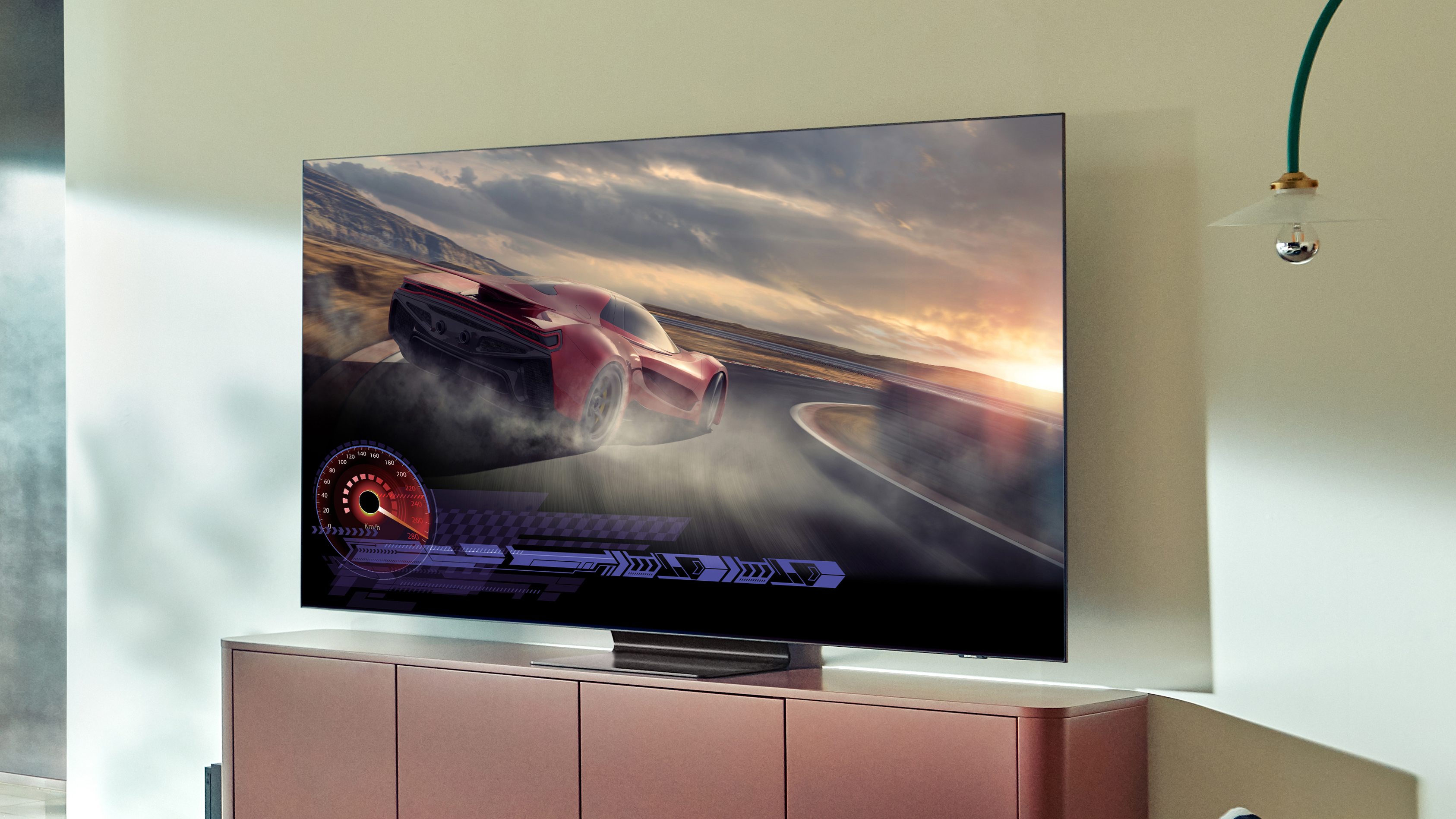
We may as well cut to the chase here. The Samsung 65QN95A is a very accomplished TV, and it makes a remarkably strong case for Mini-LED as a television technology.
Few are the films that don’t at some point feature white text on a black ground – it’s most often the end credits, and quite often the text is scrolling. Even decent LED/LCD TVs will struggle with this sort of thing: the text can blur or smear, and backlighting can produce a halo around the words. And the ‘black’ of the screen itself is never as black as the OLED TV equivalent. We've all seen this on TVs for years…
But the QN95A doesn’t struggle in the slightest – it keeps the text under control, both in terms of its movement and its brightness, and it produces far deeper, more convincing black levels than any LED/LCD viewer is used to.
And as well as notable contrasts, black levels and backlight control, give the Samsung the right stuff to work with (some 4K HDR10+ content, ideally) and it serves up prodigiously detailed and defined images. Edge definition is smooth and convincing, while information regarding skin-tone is natural and confident too. There’s proper depth of field to long shots, while the colour palette the QN95A draws from is vibrant, naturalistic and extensive. On-screen motion, whether rapid or of the particularly testing slow-pan type, is handled with absolute assurance.
It’s contrasts and black tones that impress most of all, though, mostly because they’re so much better than we’re all used to from backlit screens. Even at its most tricky – a dark interior illuminated by a candle, for example – the Samsung keeps the glow of light where it is meant to be and keeps the surrounding area nicely dark yet still full of detail.
Give the QN95A a free hand with its settings (it’s keen to recalibrate itself should you change source input, presumably on the basis that it knows better than you) and there can be difficulties: televised sport via a cable TV box, for instance, ‘enjoys’ colours so overdriven it’s almost like being shouted at. Once you’ve (re)established who’s boss, though, the Samsung is just as impressive here as elsewhere. The constant motion of broadcast sport is controlled with assurance, and the great swathes of uniform colour are detailed and differentiated.
As a games monitor, too, the QN95A scores highly. Those eyebrow-raising response times prove totally credible, and where motion, depth of field and detail retrieval are concerned the Samsung’s performance doesn’t drop off in the slightest. Games developers go to an awful lot of trouble to make lighting look convincing, and the Mini-LED arrangement of this TV is endlessly rewarding in this respect.
The QN95A is fitted with Samsung’s Neo Quantum Processor 4K, which is a refinement of the AI-assisted engine the company introduced last year, and it counts upscaling among its tasks, along with stuff like the administration of all those dimming zones (very nearly 800 of them, we understand).
Feed it some content of reasonable resolution and quality and the Samsung proves a willing and capable upscaler – Full HD stuff looks halfway to as detailed and well resolved as native 4K content. Of course, it can’t make a silk purse out of the sow’s ear that is daytime TV reruns of 1980s police dramas. Everything has limitations.
Samsung QN95A review: Sound quality
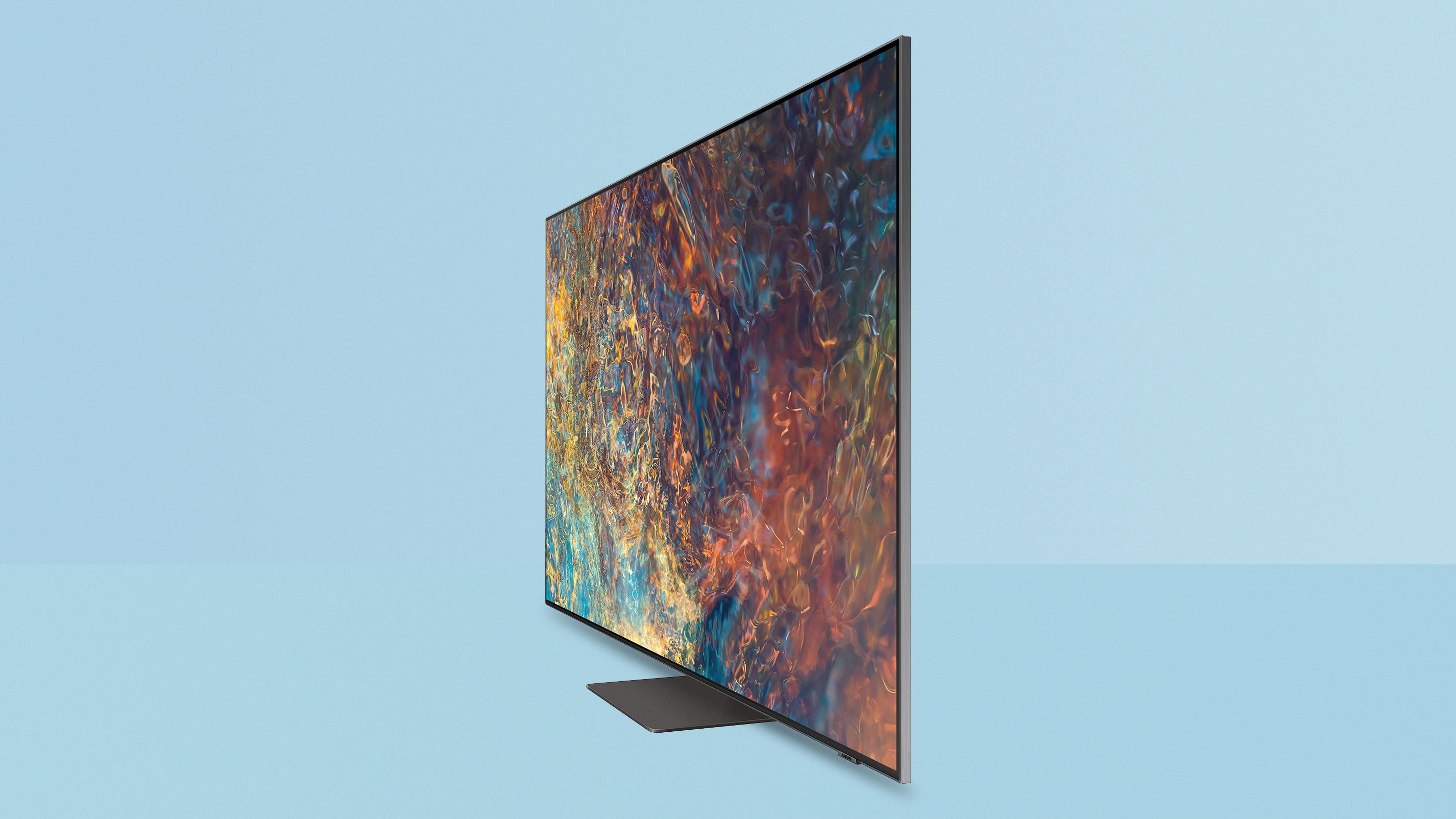
No two ways about it, by the standards of audio systems integrated invisibly into TV frames, the OTS+ arrangement here is pretty good. It’s distinct and quite open, detailed, and even passably dynamic.
There’s more low-frequency presence available than is usual from TV audio systems, and sound does definitely mimic on-screen movement – up to a point, at least. With no Dolby Atmos decoding on board, it's up to the TV to interpret the more 3D elements of sound.
Even at decent volume the sound doesn’t harden too much, and it stays poised and defined when playing very quietly.
And yet… you’ve no real excuse for not budgeting for a proper audio system – one of the best soundbars at the very least – to complement the lavishly accomplished images the Samsung is capable of. No one should be considering splashing this much on a new TV without money aside to bring the audio performance up to snuff.
Samsung QN95A review: Design & usability
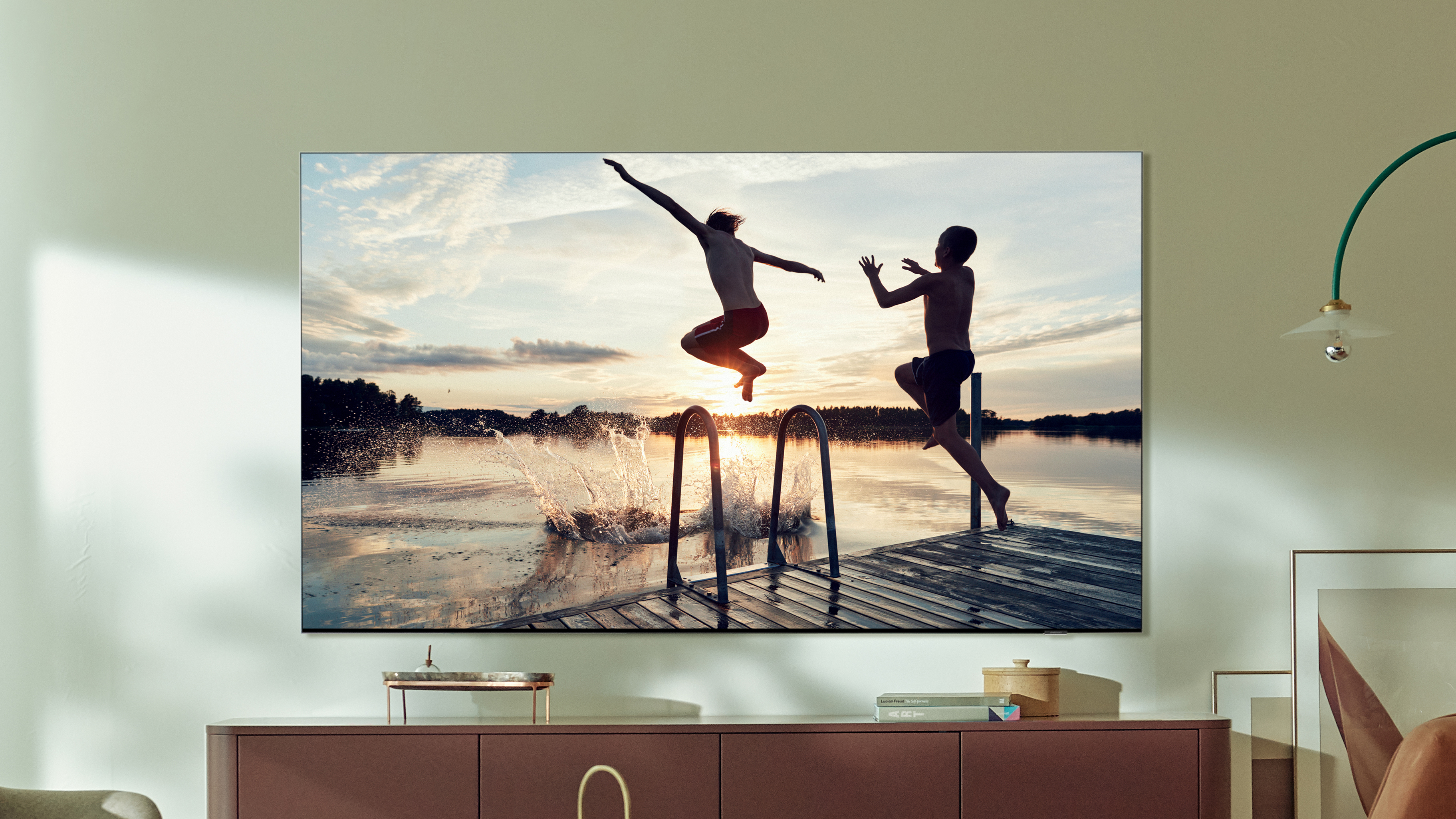
We’ve already established the QN95A is nice and slim. We know it needs only one connection to take care of every aspect of its functionality. So when you add in a vanishingly brief bezel surrounding the great big screen, it should be obvious the Samsung’s design is a) tailor-made for wall-mounting and b) basically all screen. Which counts as a win/win.
Usability is just as satisfying. Samsung’s Tizen-based operating system has long been acknowledged as one of, if not the, best around, so the company has very sensibly left well enough alone. Which means you get crisp, clear, logical and straightforward on-screen menus, and an absolute stack of apps from companies both ubiquitous and niche.
There are sufficient options in the set-up menus to make inveterate tweakers feel like they’re getting their money’s-worth, but those who don’t fancy a deep dive into chroma subsampling and the like will be able to achieve lovely picture quality regardless.
Navigation is via the small, minimal and solar-powered remote handset. It’s a triumph of the ‘less is more’ school of remote control design. It’s got a mic button (and a mic, obviously) from which it’s possible to issue voice commands to whichever voice assistant you wish to specify.
Samsung QN95A review: Verdict
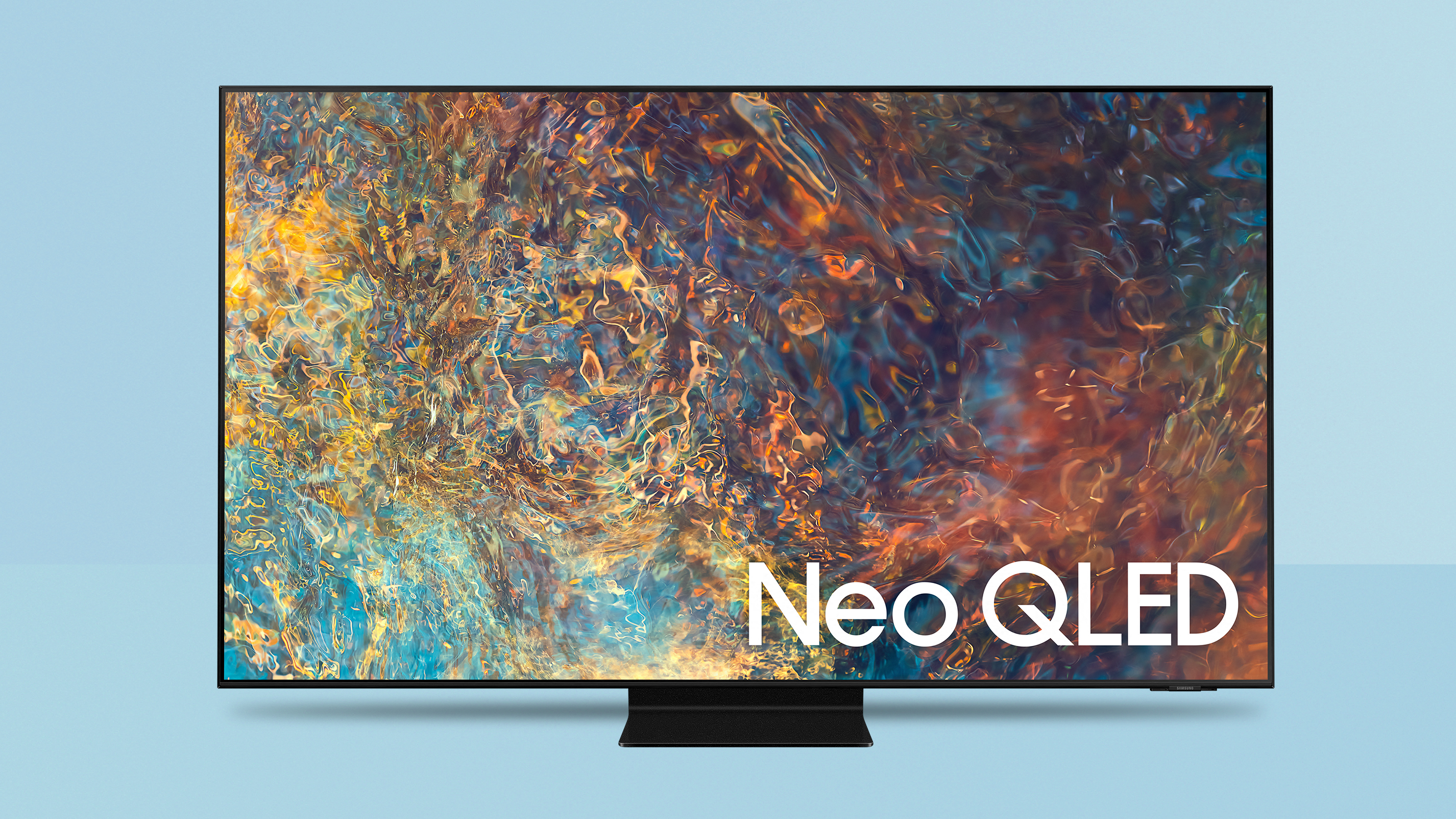
Samsung knows how to charge, there’s no two ways about it – but in this instance the QN95A goes an awfully long way towards justifying the asking price. It’s the most complete LED-lit LCD TV we’ve seen in we don’t know how long – maybe ever.
From its stunning control of precise light and dark to its generous helpings of detail and smooth motion control, it impresses start to finish. As the total image package, it edges out the OLED TVs we've seen so far – though 2021's OLEDs might have something to say about that, once they arrive.
It’s made us completely impatient to see how effectively Samsung’s rivals will be able to rise to the Mini-LED gauntlet that’s been thrown down. Though if the QN95A turns out to be an early peak for the technology in 2021, that would be okay too.
Sign up to the T3 newsletter for smarter living straight to your inbox
Get all the latest news, reviews, deals and buying guides on gorgeous tech, home and active products from the T3 experts
Simon Lucas is a freelance technology journalist and consultant, with particular emphasis on the audio/video aspects of home entertainment. Before embracing the carefree life of the freelancer, he was editor of What Hi-Fi? magazine and website – since then, he's written for titles such as Wired, Metro, the Guardian and Stuff, among many others. Should he find himself with a spare moment, Simon likes nothing more than publishing and then quickly deleting tweets about the state of the nation (in general), the state of Aston Villa (in particular) and the state of his partner's cat.
-
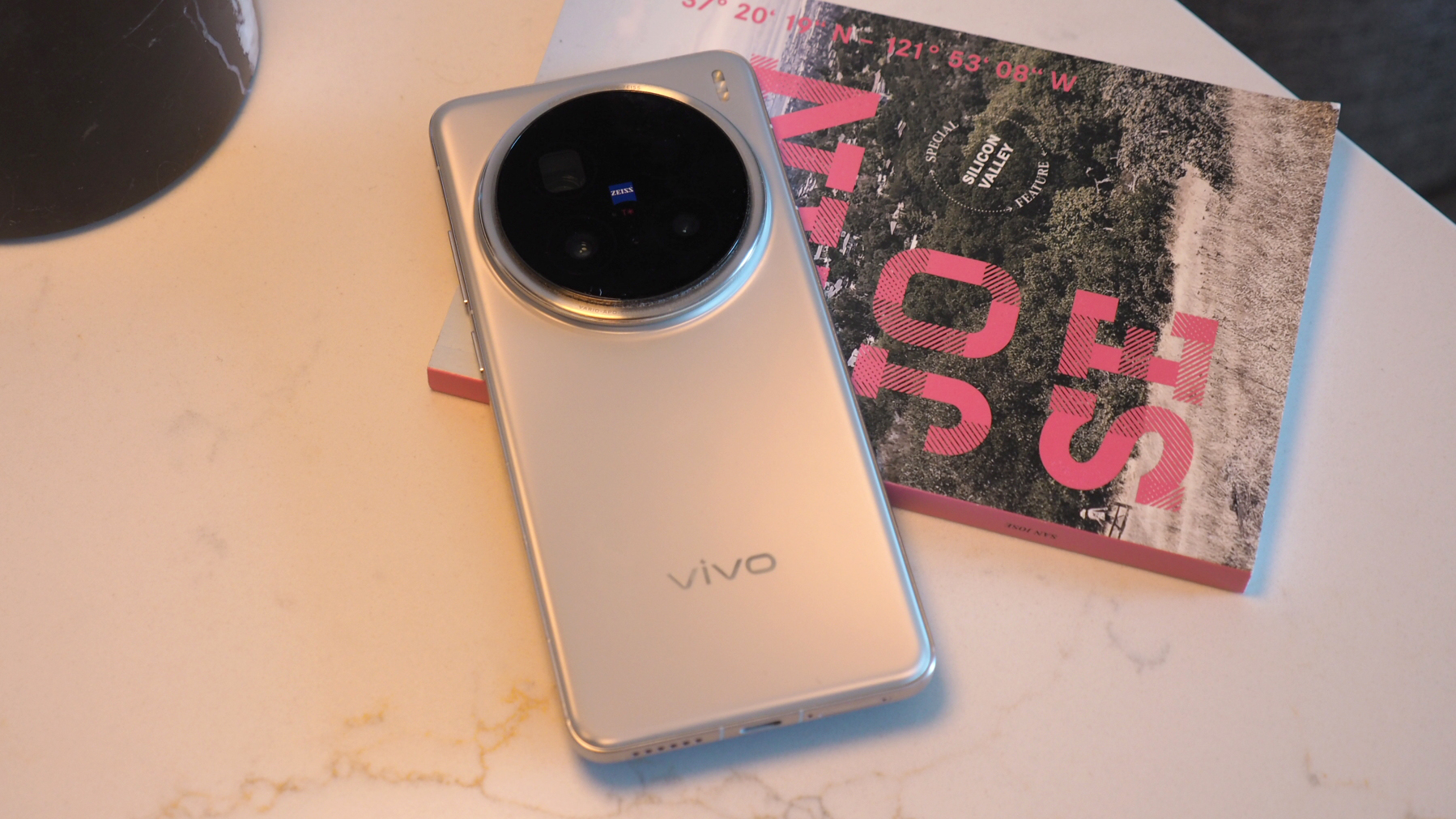 Android phones just got surprise prospective upgrade from MediaTek
Android phones just got surprise prospective upgrade from MediaTekDimensity 9400+ anyone? MediaTek's powerhouse chip just ranked up
By Mike Lowe Published
-
 This Disney Plus favourite had 100% on Rotten Tomatoes last season – here's when the new one is out
This Disney Plus favourite had 100% on Rotten Tomatoes last season – here's when the new one is outIt's an Emmy award-winning show
By Sam Cross Published
-
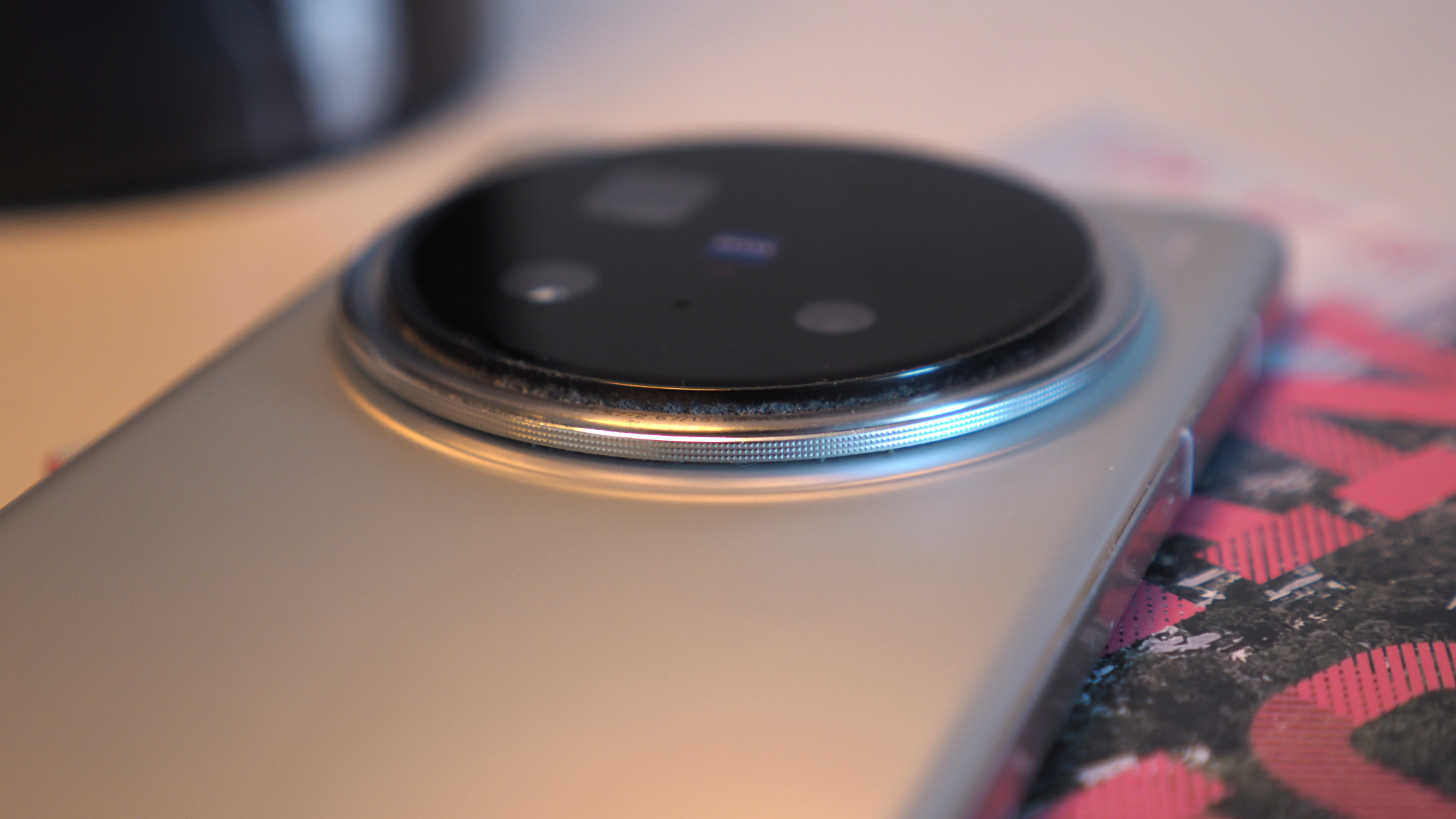 This top Android phone camera just got even better
This top Android phone camera just got even betterThis could take smartphone zoom to a totally new level
By Chris Hall Published